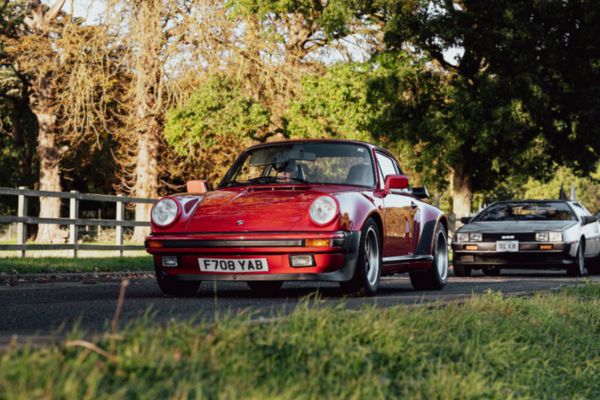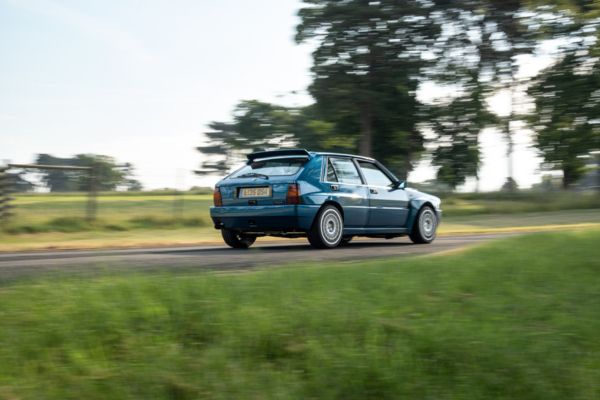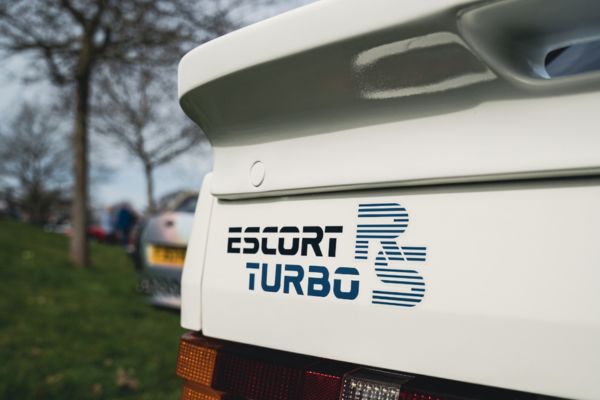The 1980s: When turbos ruled the road
The 1980s really was a turbocharged decade. Everything from politics to music was undergoing an accelerated pace of change, and nowhere was this more obvious than the cars you could buy. Not every turbocharged car was a treat to drive, but the 1980s gave us many of the best-loved turbocharged classics of today.
Engines with turbochargers had been around since the 19th century and they became more widely used in aviation to maintain power at high altitudes. Car makers only adopted the technology when it was possible to produce a turbo small and efficient enough to snuggle under the bonnet of a car. The first to do this was Oldsmobile with its turbo’d V8, which just beat the Chevrolet Corvair Turbo to market in 1962. However, it remained an exotic and unusual means to more power and not even BMW could convince many with its 2002 Turbo. It was Porsche and Saab that took the turbo from the fringes to a more mainstream acceptance with their uprated and rapid models.
The 911 Turbo and Saab 99 Turbo laid the groundwork for Audi to astonish the world with its Quattro coupe in 1980. While the German’s grip-gaining four-wheel drive drew most attention, it was the 2.1-litre five-cylinder turbocharged engine with 200bhp that provided the thrust for 0-60mph in 7.1 seconds and 137mph flat out. The distinctive sound of the Audi’s motor also endeared it to fast car fans and meant ‘turbo’ became a byword for more, more, more.
Other early adopters to turbocharging were Lotus and Renault. The French firm had been experimenting with forced induction in its Formula 1 RS10 car. It had started as a bit of joke in 1977 due to unreliability, but Renault’s engineers persisted and it wasn’t long before the 2-litre V6 engine was putting out 510bhp or more. While it didn’t secure any race wins, this work also led to the Renault 5 Turbo, a Dr Frankenstein take on the company’s supermini with a turbocharged and mid-mounted 1.4-litre motor making 160bhp in road trim and plenty more for rallying. Why such a small capacity engine? It came down to rallying regulations that stipulated any car with a turbocharger had its capacity multiplied by 1.4, so a 1.4-litre turbo engine was deemed similar to a non-turbo 2.0-litre. It worked for Renault and the 5 Turbo was very successful in rallying.

On the road, Lotus used turbocharging to keep its Esprit in the hunt with rivals from Ferrari and Porsche. Compared to the standard 2.2-litre engine in the Esprit, the Turbo came with an added 50bhp to give a total of 215bhp. This gave 0-60mph in 5.6 seconds to outpace most of the competition and gave the Esprit a giant-killing reputation.
The lure of turbocharging was not limited to flyweight sports cars, though, as Bentley ably demonstrated with its Mulsanne Turbo in 1982. Keen to step out of the shadow of its Rolls-Royce sibling, Bentley used a Garrett turbo attached to the venerable 6.75-litre V8 to increase power to an ultimate output of 328bhp and a colossal 486lb ft in the Turbo R. Never had so much car moved so fast and the Turbo R covered 0-60mph in 6.7 seconds and topped out at 137mph. Vitally, it meant Bentley started to outsell Rolls-Royce as the name regained its sheen of sophisticated speed.

As the 1980s continued, turbocharging was making its mark in the world of Group B rallying. Most, though not all, of the top cars in this no-holds-barred motorsport used turbocharging to extract outrageous amounts of power from their engines. By 1986, the quickest cars could achieve 0-60mph in 2.3 seconds on gravel tracks thanks to as much as 600bhp. However, they were outlawed in 1987, but the Group A cars that replaced them on the world’s rally stages also used turbos to give 300bhp and plenty of low- and mid-rev shove.
Porsche had hoped for great success in rallying and developed its 959 using a twin-turbo 2.8-litre flat-six engine. It was unusual because its turbos were fitted in sequence, so one began working low in the rev band and the second joined in later. The idea was to give a smoother delivery of power than the flick-switch burst of energy most turbo cars provided up that point. It worked a treat in the 959, which could hit 197mph and 0-60mph in 3.7 seconds in 444bhp road trim.
Not to be outdone, Ferrari had already sold all 272 of its 288 GTO model from 1984. It used a twin-turbo 2.9-litre V8 that offered a heavyweight’s punch when the turbos spooled up to produce a mighty 400bhp. This experience led to the even faster, more potent F40 in 1987 which came with 478bhp and was reckoned to be the rawest, most exciting Ferrari since the 250 GTO.

However, turbocharging was not all about supercars and Ford, the cheerleader for affordable fast cars, had introduced the Escort RS Turbo in 1984 with 132bhp from its 1.6-litre engine. Fun as it was, Ford fans were soon distracted by the Sierra RS Cosworth and its 204bhp 2.0-litre turbo engine, or 224bhp in later RS500 form. Made to go racing, the Sierra RS Cosworth cleaned up on track and in showrooms, and it was followed by the four-door Sapphire models.
By the late 1980s, turbocharging was common across many car manufacturers’ ranges, not just for performance models but more mainstream cars too. Saab showed the way with its light pressure turbo engines in the 900 and 9000, and Volvo even offered a turbocharged engine in its wonderfully brick-shaped 240 models. However, a late arrival in the 1980s was about to start a whole new battle for turbo-powered supremacy that would rage throughout the next decade. This was the Nissan Skyline GT-R of 1989 that won 29 races from 29 starts in the Japanese Touring Car Championship between 1989 and 1993, and it rewrote the rules for fast cars thanks to its turbocharged motor.
What's your favourite 80's turbo? Do you own your dream turbo? Let us know in the comments?

COMMENT